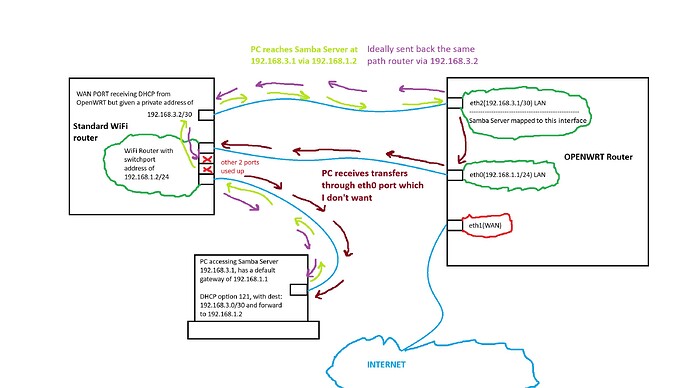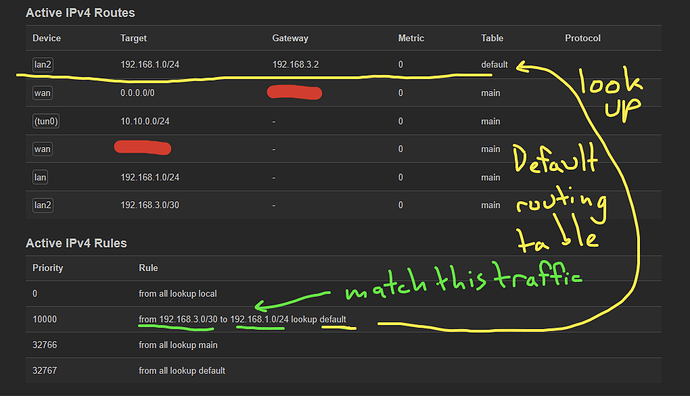I have quite a complex problem. First the reason I need my samba server on a separate ethernet port is gigabit speeds get choked up by Samba transfers and I wanted to separate internet traffic and samba traffic by interfaces.
I have connected to my mini pc based OpenWRT a separate WiFi router, and Ideally I want to make use of all it's ports.
So what I have done is connect an ethernet cable from the Samba server binded interface on the OpenWRT router to the WAN port of this WiFi router which it receives a DHCP'd privated IP address with NAT and firewall disabled. Ideally you would just bridge the WAN & LAN ports on the WiFi router and just make the second ethernet port on OpenWRT the same LAN IP network, but it doesn't have this function.
I've made use of DHCP to add a static route to the LAN clients so they can reach the Samba server via the WiFi router's switchport and then reach the Samba binded ethernet interface.
The problem I have is the traffic doesn't come back the same pathway and just goes through normal eth0 interface where internet only traffic should be.
I'm assuming I'd need some IP rule, or policy based routing, but I'm having a difficult time trying to understand what is what, and where to start or what I need to do exactly. So to tell OpenWRT that any traffic that is received on the Samba server's interface to send it back that way.
It's doing the default thing because the destination of 192.168.1.x/24 is already attached to itself, and goes that direction.
Here's an illustration of what I mean:

